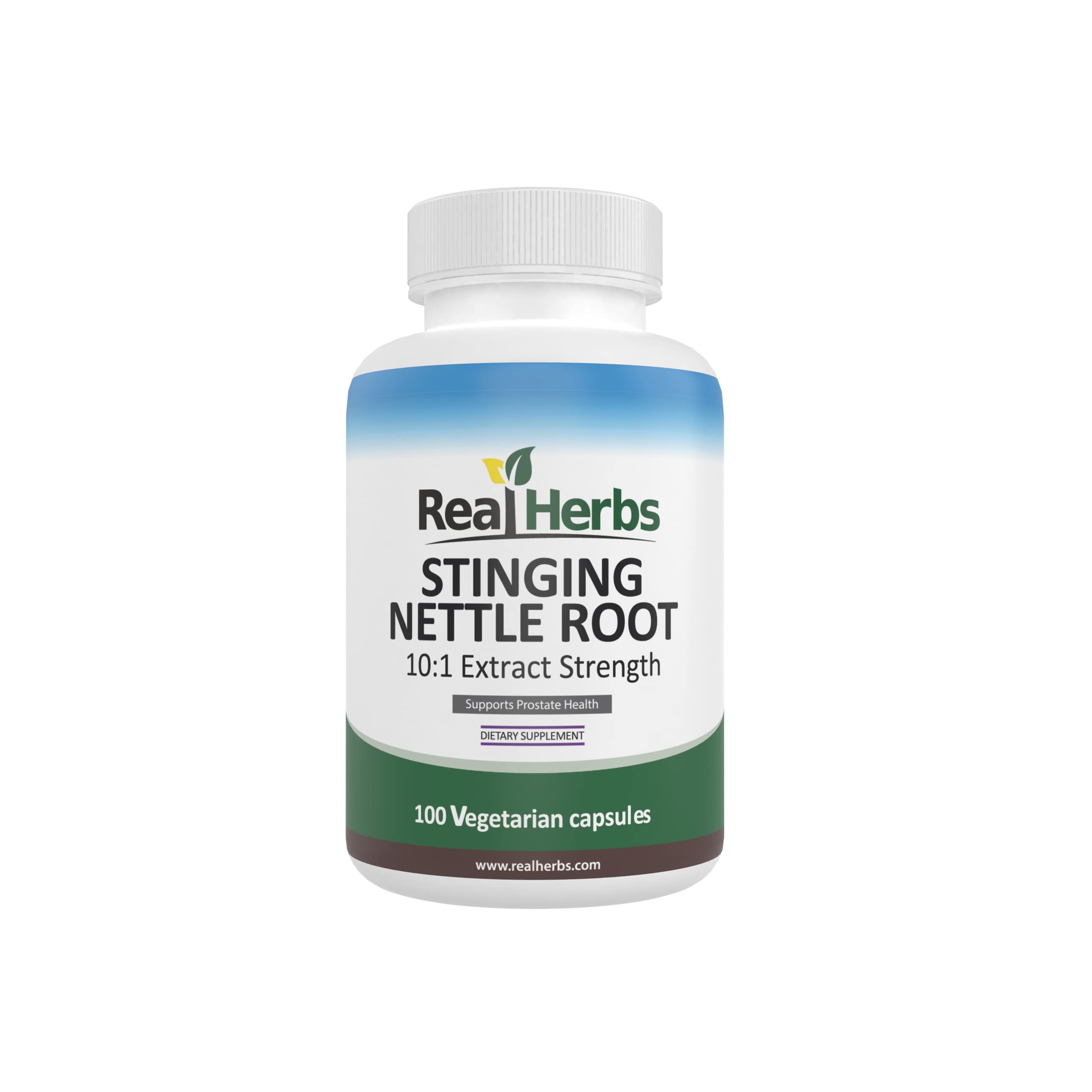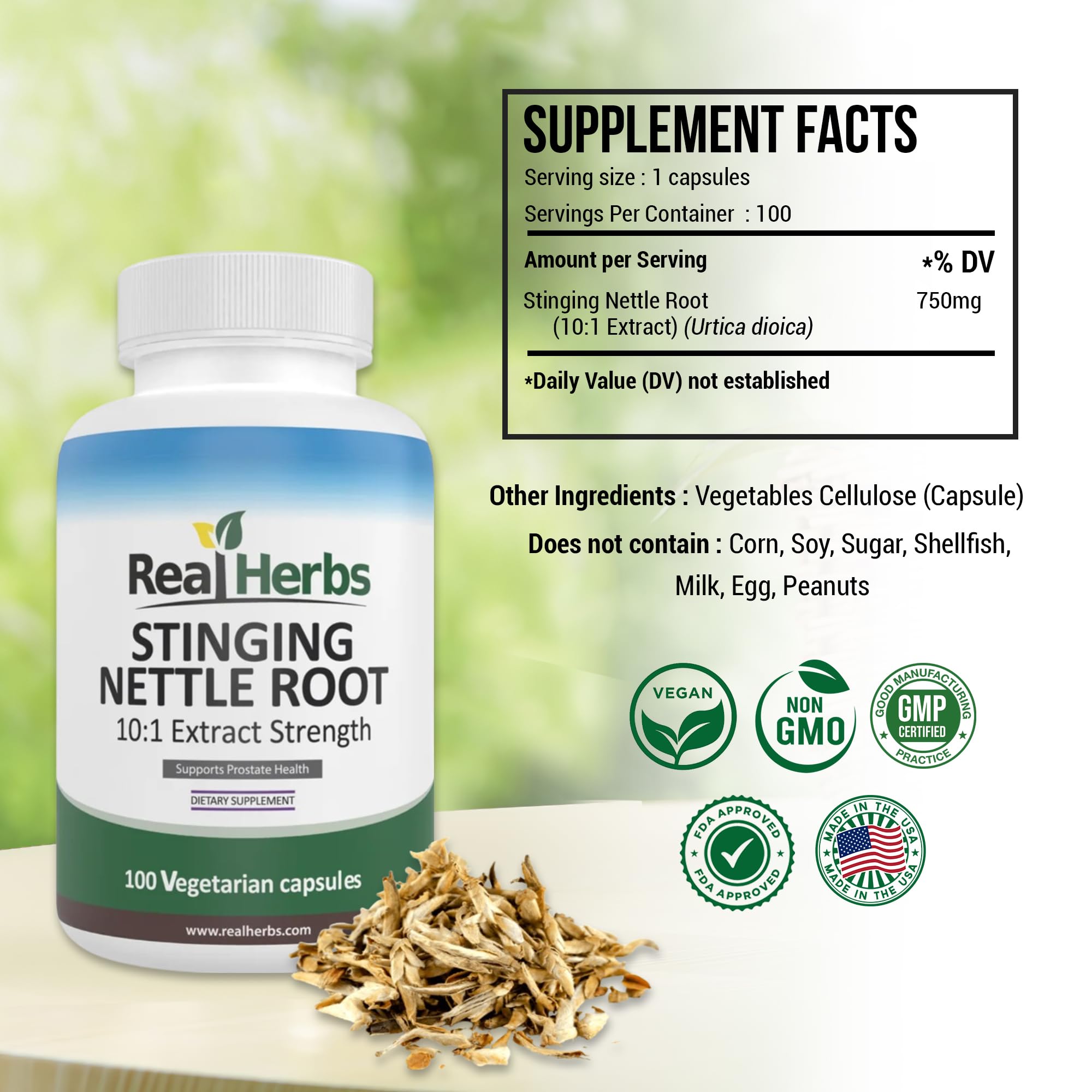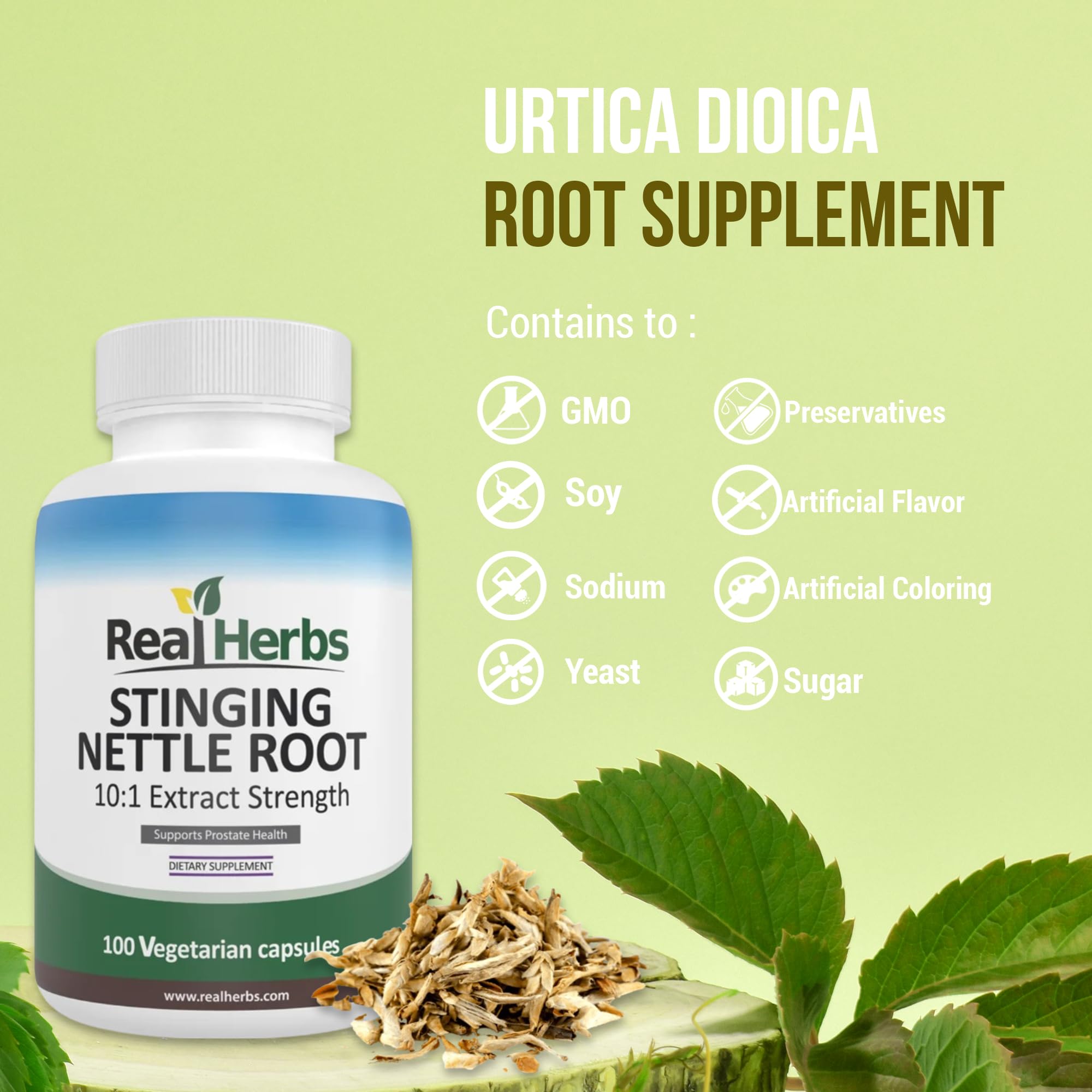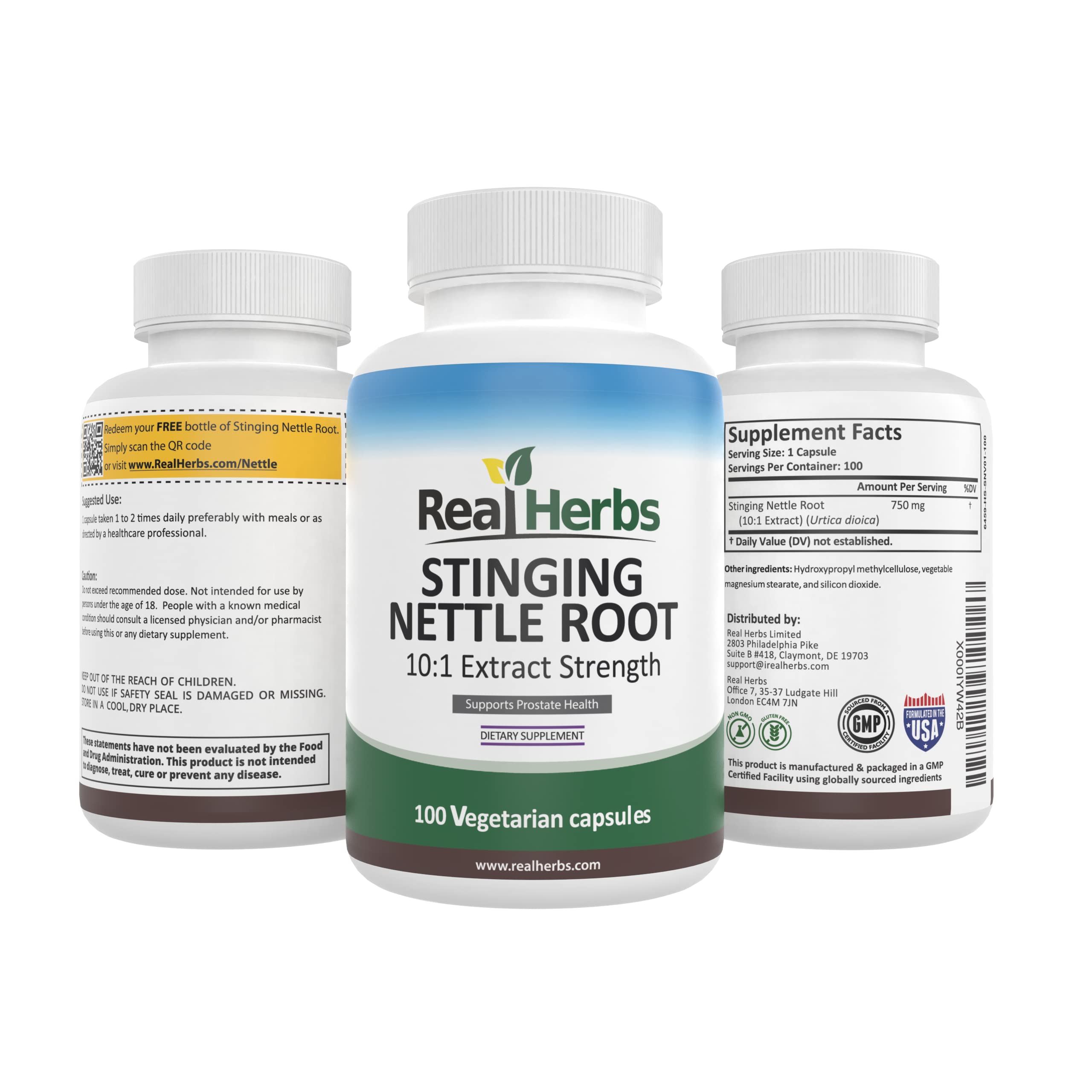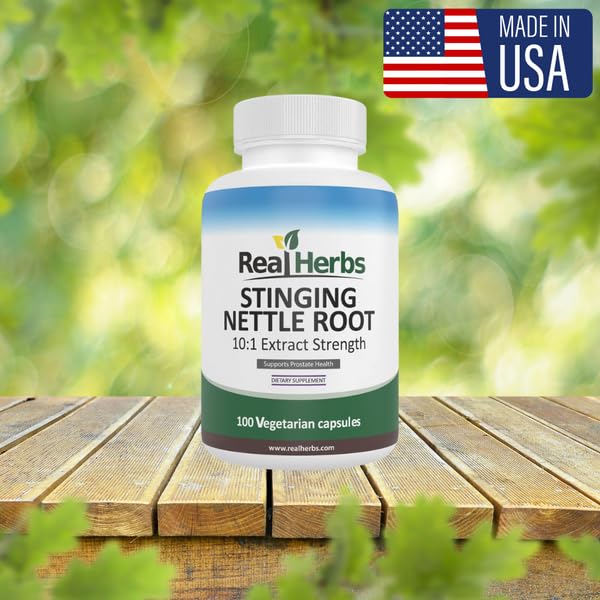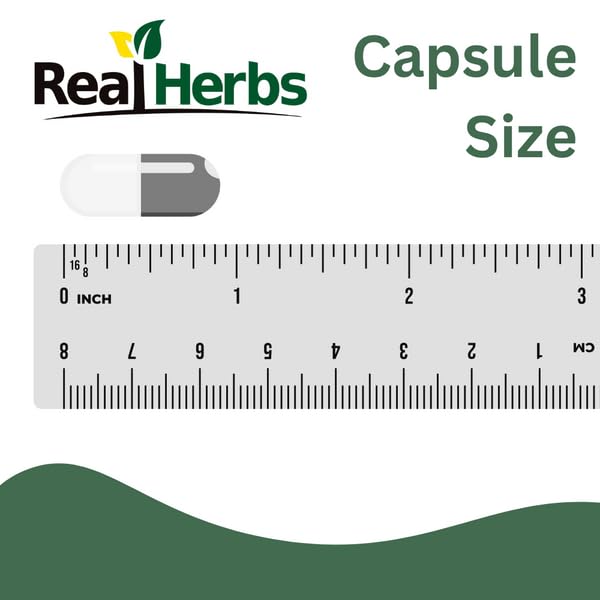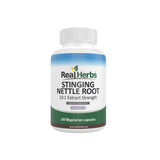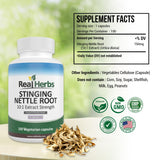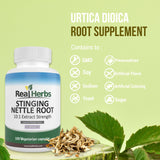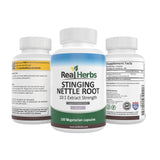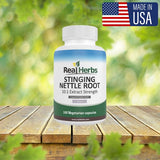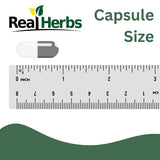Is Nettle Leaf The Same As Stinging Nettle?
Is Nettle Leaf The Same As Stinging Nettle?
Understanding the Herbal Difference
An essential guide by Jessica Johnson, Herbal Science Researcher at Real Herbs.
Deciphering the Nettle Plant for Optimal Herbal Use
When exploring the world of herbal remedies, you might often come across terms like "stinging nettle" and "nettle leaf," sometimes used interchangeably. This can lead to confusion, as while they refer to the same plant species, *Urtica dioica*, the distinction between the plant's various parts—specifically the leaf and the root—is crucial for understanding their unique chemical compositions, traditional uses, and specific health benefits.
This article aims to clarify the relationship between stinging nettle as a whole plant and its distinct parts: the nettle leaf and nettle root. We will delve into their individual chemical profiles, explore their traditional and scientifically supported uses, and highlight why choosing the right part of the plant matters for targeted wellness outcomes. By the end, you'll have a clear understanding of these powerful herbal remedies.

Understanding the Stinging Nettle Plant (*Urtica dioica*)
The term "stinging nettle" refers to the entire plant species, *Urtica dioica*, which is native to Europe, Asia, northern Africa, and North America. It's famously known for its fine, hollow hairs (trichomes) on the leaves and stems that release irritating chemicals upon contact, causing a temporary stinging sensation—hence the name "stinging nettle."
Despite its prickly defense mechanism, stinging nettle has been a staple in traditional medicine and cuisine for centuries. It's highly valued for its rich nutritional profile, including vitamins, minerals, amino acids, fatty acids, and various phenolic compounds [1, 2].
Nettle Leaf vs. Nettle Root: A Tale of Two Parts
While both are derived from the same plant, nettle leaf (aerial parts) and nettle root (underground parts) possess distinct chemical compositions that lend themselves to different therapeutic applications. Understanding this differentiation is key to leveraging the plant's full potential.
Nettle Leaf (Aerial Parts)
The leaves and upper stems of the stinging nettle plant are commonly referred to as "nettle leaf." These parts are rich in a diverse array of bioactive compounds, giving them potent properties used widely in herbal medicine [3, 4]:
- Chemical Composition: Nettle leaves contain flavonoids (like quercetin and kaempferol), carotenoids, vitamins (A, C, K, and B vitamins), minerals (iron, calcium, magnesium), amino acids, and various phenolic compounds. They also contain compounds responsible for the stinging sensation when fresh, such as histamine and serotonin, but these are typically denatured during drying or processing for supplements [1, 3, 4].
-
Traditional & Scientific Uses: Nettle leaf is primarily celebrated for its traditional use in supporting seasonal allergies, joint health, and as a diuretic [1].
- Allergy Support: It may help modulate histamine response, making it a popular natural antihistamine for hay fever symptoms.
- Anti-inflammatory: Extracts from the leaf can inhibit proinflammatory transcription factors like NF-kappaB, contributing to its use as an antirheumatic remedy and for supporting joint pain [5].
- Diuretic Properties: Nettle leaf helps promote healthy urination and may assist in flushing out toxins, contributing to kidney and urinary tract health [1].
- Nutritional Value: Highly nutritious, fresh nettle leaves are consumed as a food, similar to spinach, and are used to make nettle tea, which has been studied for various health benefits, including inhibiting the growth of certain cells in vitro [1, 4, 6].
Nettle Root (Underground Parts)
The root of the stinging nettle plant has a different phytochemical profile, making it suitable for distinct applications, primarily related to male health.
- Chemical Composition: Nettle root is particularly rich in lignans, scopoletin, and plant sterols (like beta-sitosterol). These compounds are believed to be responsible for its specific therapeutic effects [3, 4, 8].
-
Traditional & Scientific Uses: Nettle root is most well-known for its traditional use and scientific investigation in supporting prostate health and healthy testosterone levels in men.
- Prostate Health (BPH): It is a widely studied herbal remedy for symptoms of benign prostatic hyperplasia (BPH), helping to improve urinary flow and reduce nighttime urination [3, 8].
- Testosterone Support: The lignans in nettle root may interact with sex hormone-binding globulin (SHBG), potentially reducing the amount of testosterone bound to SHBG and thereby increasing levels of "free" (bioavailable) testosterone [3, 8].
Why the Distinction Matters: Targeted Health Benefits
While both nettle leaf and nettle root come from the same plant, their distinct chemical profiles mean they are best used for different health concerns. Using a nettle leaf extract for prostate issues, or a nettle root extract for seasonal allergies, might not yield the desired results. Therefore, understanding which part of the plant is specified in a supplement is critical for targeted and effective herbal supplementation.
Usage and Forms of Nettle Leaf and Nettle Root
The form and dosage of nettle supplements depend on whether you are using the leaf or the root, and the specific health goal.
- Nettle Leaf: Commonly consumed as a tea (infusion of dried leaves), or in capsule/powdered extract form. Dosage for leaf capsules typically ranges from 300 mg to 500 mg, taken 1-3 times daily, or as directed for teas.
- Nettle Root: Primarily available as an extract in capsule form. Dosages for root extracts often range from 250 mg to 500 mg, typically taken once or twice daily. Look for standardized extracts for consistent levels of active compounds like lignans.
Always follow the specific dosage instructions on your product label, as concentrations can vary between manufacturers.
Safety and Potential Side Effects
Both nettle leaf and nettle root are generally considered safe for most individuals when consumed in recommended dosages. However, awareness of potential side effects and interactions is important [2].
-
Common Mild Side Effects:
- **Gastrointestinal Upset:** Mild stomach upset, diarrhea, or constipation can occur, especially when starting a new supplement. Taking with food can help [2].
- **Diuretic Effect:** Both parts of the plant can increase urine production [2]. This is generally mild but should be noted.
-
Specific Considerations:
- **Allergic Reactions:** Rare allergic reactions are possible with any herbal product.
- **Drug Interactions:** Nettle can interact with medications like blood thinners (due to Vitamin K content), blood pressure medications, and diabetes medications, potentially altering their effects [2]. Consult a healthcare professional if you are on medication.
- **Pregnancy and Breastfeeding:** Nettle is generally not recommended during pregnancy or breastfeeding due to insufficient safety data and potential effects on uterine contractions [2].
A comprehensive review confirms that the risk for adverse events during nettle root treatment is very low, as is its toxicity [8]. Similarly, stinging nettle extracts are generally well tolerated with minimal or no adverse events [2].
Conclusion: Informed Choices for Herbal Health
In conclusion, "stinging nettle" refers to the entire plant (*Urtica dioica*), while "nettle leaf" and "nettle root" refer to distinct parts with unique chemical compositions and therapeutic applications. Nettle leaf is rich in compounds beneficial for allergies, inflammation, and as a diuretic, often used in teas and general wellness supplements. Nettle root, on the other hand, is particularly effective for supporting prostate health and healthy testosterone levels due to its specific lignan and sterol content.
Understanding these differences empowers you to make informed decisions when selecting herbal remedies. By choosing the correct part of the stinging nettle plant for your specific health needs, you can effectively harness its potent benefits and embark on a more targeted path to wellness. Always remember to consult with a healthcare professional before starting any new supplement, especially if you have underlying health conditions or are taking other medications.
Ready to explore the power of Stinging Nettle Root for your health?
Real Herbs Stinging Nettle Root Extract is a premium, potent supplement crafted for purity and efficacy. Our commitment to quality ensures you receive a product designed to support healthy testosterone levels, prostate health, and overall male vitality.
Who it helps: Men seeking natural prostate support or looking to optimize their testosterone levels with a high-quality nettle root product.
Why it’s safe/trusted: Manufactured under strict quality controls, Real Herbs prioritizes purity and potency, providing you with a reliable and effective herbal solution.
All our products are backed by our 100-Day Money-Back Guarantee!
"I used to think all nettle was the same, but focusing on the root extract for my prostate has made a real difference. Real Herbs quality is noticeable." - John P.
"After understanding the distinct benefits, I chose nettle root from Real Herbs, and my energy levels have definitely improved." - Michael R.
Disclaimer: The information provided in this article is for educational purposes only and is not intended as medical advice. Always consult with a qualified healthcare professional before making any decisions about your health or starting any new supplement regimen. These statements have not been evaluated by the Food and Drug Administration. This product is not intended to diagnose, treat, cure, or prevent any disease.
Scientific Credibility & Citations
- Akbay P, Başaran AA, Başaran N. Nutritional and pharmacological importance of stinging nettle (Urtica dioica L.). *Turk J Med Sci*. 2022 Jun 29;52(3):968-981. PMID: 35800714 (Review)
- National Institute of Diabetes and Digestive and Kidney Diseases. Stinging Nettle. In: LiverTox: Clinical and Research Information on Drug-Induced Liver Injury [Internet]. Bethesda (MD): National Institute of Diabetes and Digestive and Kidney Diseases; 2012-. 2023 Mar 3. PMID: 37011125 (Review/Information Source)
- Devkota HP, Paudel KR, Khanal S, Baral A, Panth N, Adhikari-Devkota A, Paudel S, Dahal B, Yadav SK, Aryal S, Khan H, Singh SK. Stinging Nettle (*Urtica dioica* L.): Nutritional Composition, Bioactive Compounds, and Food Functional Properties. *Molecules*. 2022 Aug 23;27(17):5429. PMID: 36014458 (Review)
- Haghi G, Mohammadi N, Nikkhah E. Wild Stinging Nettle (*Urtica dioica* L.) Leaves and Roots Chemical Composition and Phenols Extraction. *Plant Foods Hum Nutr*. 2023 Feb;78(1):164-169. PMID: 36679022 (Research Article)
- Riehemann K, Kölle EU. Plant extracts from stinging nettle (Urtica dioica), an antirheumatic remedy, inhibit the proinflammatory transcription factor NF-kappaB. *FEBS Lett*. 1999 Jan 22;442(1):89-94. PMID: 9923611 (In-vitro study)
- Duan Z, Zhao H, Yin X, Chen S, Chen Y, Zheng Y, Tang J, Zhou Y. Nettle Tea Inhibits Growth of Acute Myeloid Leukemia Cells In Vitro. *J Med Food*. 2020 Sep;23(9):976-981. PMID: 32872275 (In-vitro study)
- Chrubasik JE, Roufogalis BD, Chrubasik S. A comprehensive review on the stinging nettle effect and efficacy profiles. Part II: urticae radix. *Phytomedicine*. 2007 Aug;14(7-8):568-79. PMID: 17509841 (Review)
- Ahmad SS, Alam S, Siddiqui AA, Ansari SA. Chemical Constituents of Stinging Nettle (Urtica dioica L.). *Curr Pharm Des*. 2024;30(10):849-860. PMID: 38542403 (Review)

